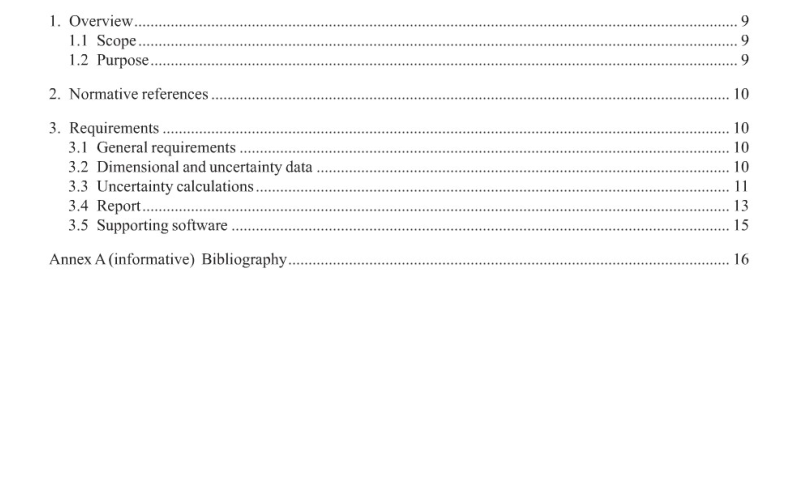IEEE 1785.3-2016 pdf download.IEEE Recommended Practice for Rectangular Metallic Waveguides and Their Interfaces for Frequencies of 110 GHz and Above- Part 3: Recommendations for Performance and Uncertainty Specifications
The following referenced documents are indispensable for the application of this document (i.e, they must be understood and used, so each referenced document is cited in text and its relationship to this document is explained). For dated references, only the edition cited applies. For undated references, the latest edition ofthe referenced document (including any amendments or corrigenda) applies.
IEEE Std 1785. 1TM-2012, IEEE Standard for Rectangular Metallic Waveguides and Their Interfaces for Frequencies of 110 GHz and Above- Part 1: Frequency Bands and Waveguide Dimensions.
IEEE Std 1785.27M-2016, IEEE Standard for Rectangular Metallic Waveguides and Their Interfaces for Frequencies of 110 GHz and Above- Part 2: Waveguide Interfaces.
3. Requirements
3.1 General requirements
IEEE Std 1785.1-2012 and IEEE Std 1785.2-2016 specify tolerances that improve both the mechanical com- patibility of rectangular-waveguide interfaces and the electrical performance. However, JCGM 100:2008 [B1] recommends that end users estimate as accurately as possible the actual uncertainties in the measurements they perform. In some cases, the precision of the apertures and interfaces machined by a given manufacturer will exceed the tolerances specified in IEEE Std 1785. 1-2012 and IEEE Std 1785.2-2016. In addition, it is not possible to determine the probability distributions of those dimensions from the tolerances specifed in IEEE Std 1785.1-2012 and IEEE Std 1785.2-2016 that JCGM 100:2008 [B1] recommends that end users consider in their uncertainty analyses. This recommended practice provides recommendations that facilitate the commu- nication of the mechanical dimensions of rectangular-waveguide apertures and interfaces actually delivered to the end user by the manufacturer or test laboratory with their uncertainties. These recommendations are specifically designed to provide end users with the information compiled by the manufacturer or test laborato- ry. End users should follow recommendations from JCGM 100:2008 [B1] to calculate the uncertainty of both reflection and transmission coefficients through interfaces provided by different vendors.
3.2 Dimensional and uncertainty data Each x in
Table 1 indicates the data that should, at a minimum, be tabulated for the user by the manufacturer or test laboratory.’ Figure 1 ilustrates some of the dimensions listed in Table 1. Specific implementations may address additional interfaces or options that add to and improve on these minimum data.
The uncertainty distributions for the tabulated data should also be specified. The tabulated information should, at a minimum, provide for the specification of standard and truncated Gaussian, rectangular, and Bernoulli (binary) distributions and a distribution should be assigned to each uncertainty mechanism. To accommodate standard and truncated Gaussian distributions, the manufacturer or test laboratory should also specify distribu- tion limits in addition to the standard uncertainty of the distribution.
The entry of a standard uncertainty is not required to specify rectangular and Bernoulli distributions. Worst-case specifications or tolerances should be specified with distributions that limit the value of a parameter to a specified range. Examples are the rectangular, arc-sine, Bernoulli, and truncated Gaussian distributions.
It should be made clear that a radius, not a diameter, is being used to specify geometric tolerance zones. The manner in which the calculations are performed should be explained clearly. Repeated measurements of the reflection coefficient of a load made using a calibrated reflectometer (e.g., a vector network analyzer) should be provided for purposes of comparison when data is available( Li, et al [B11], Horibe and Noda [B8], and Horibe and K ishikawa [B6]).
3.3 Uncertainty calculations Uncertainty calculations should adhere to the recommendations and practices given in JCGM 100:2008 [B1] and JCGM 101:2008 [B2]. The uncertainty due to the shunt susceptance caused by the interconnec- tion of two rectangular-waveguide interfaces has a roughly quadratic dependence on the lateral off- set between the interfaces and can dominate other sources of uncertainty at submillimeter-wave and tera- hertz frequencies (Williams [B15]). Thus, the calculations should be capable of correctly propagating rectangular-waveguide uncertainties ([B15], Hunter [B9], Marcuvitz [B12], Anson, et al [B3], Brady [B5], Kerr, et al [B 10], Bannister, et al [B4], Oleson and Denning [B13], Ridler, et al [B14] and Horibe.IEEE 1785.3 pdf download.IEEE 1785.3-2016 pdf download
IEEE 1785.3-2016 pdf download

Leave a Reply